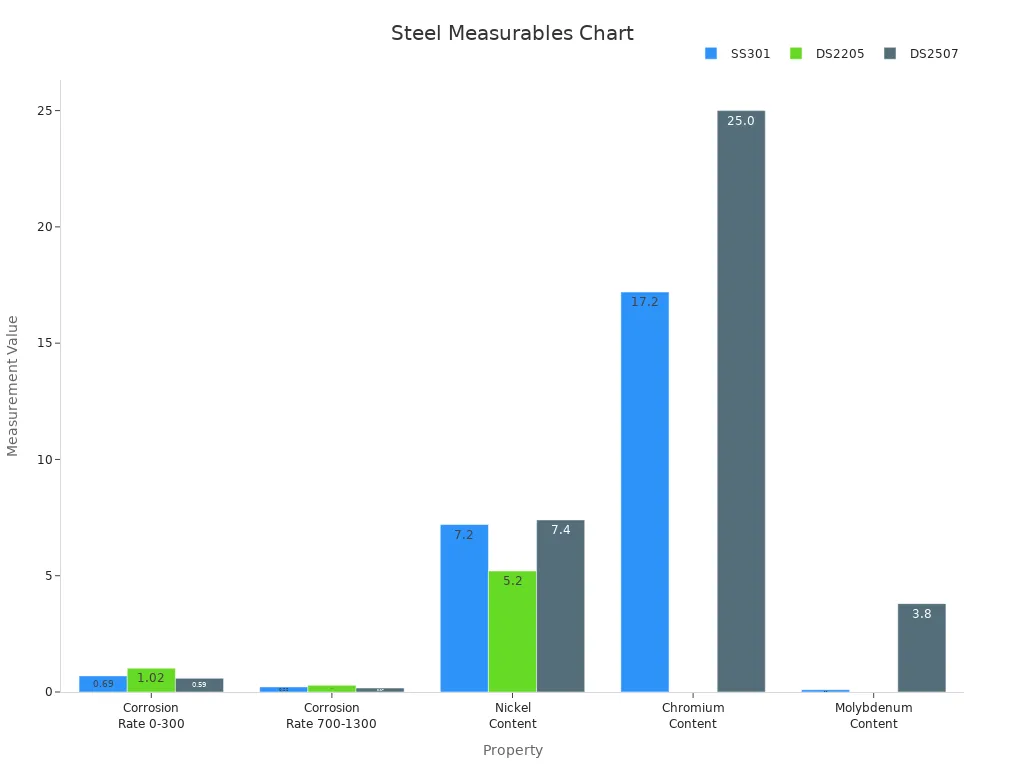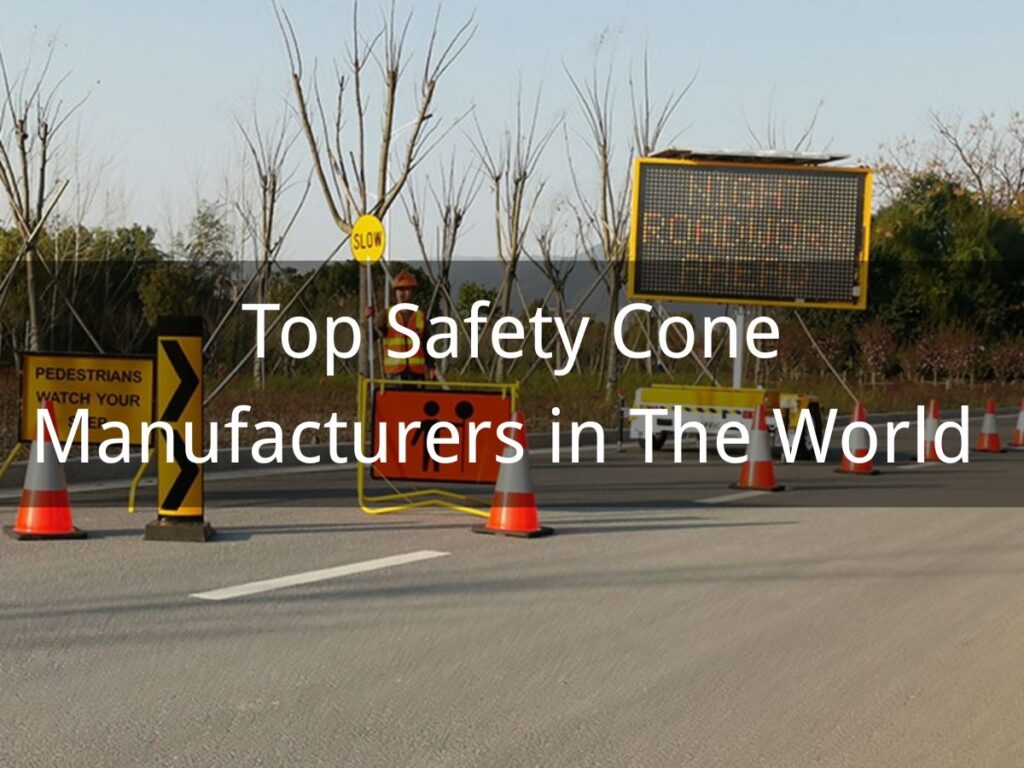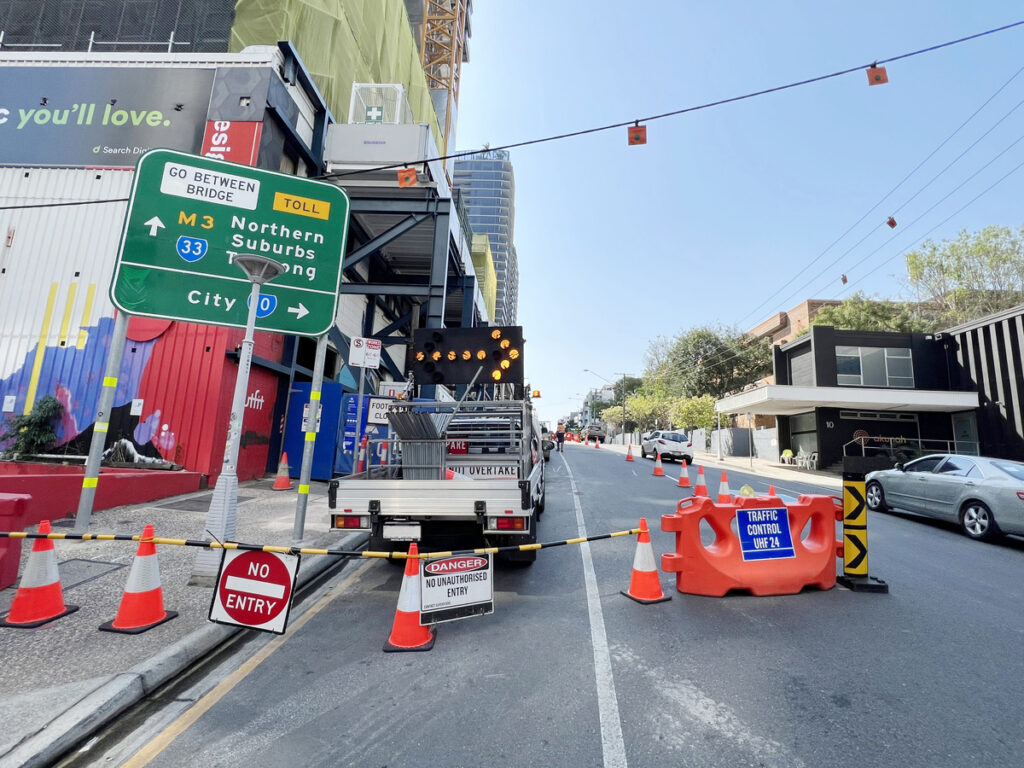
Ambientes costeiros exigem resistência à corrosão para cabeços. Postes de amarração de aço inoxidável funcionam melhor perto de água salgada, enquanto projetos no interior podem usar cabeços de concreto ou até mesmo calços de amarração em ferro fundido. Postes de amarração de aço à venda oferecem segurança para ambos os locais. Calços de amarração em aço fundido e calços de amarração em ferro fundido fornecem resistência para necessidades de serviço pesado. Os calços de amarração em ferro fundido também resistem ao impacto e ao desgaste.
Procurando o certo Bollards de tráfego para o seu site? Explore a gama completa de soluções de segurança no trânsito da OPTRAFFIC e obtenha aconselhamento especializado para o seu próximo projeto.
Takeaways -chave
- As áreas costeiras precisam de cabeços resistentes à corrosão, como calços de amarração de aço inoxidável ou aço fundido, para resistir à água salgada e à umidade..
- Os cabeços interiores enfrentam menos corrosão salina, mas ainda requerem revestimentos protetores e manutenção regular para lidar com a chuva, poluição, e mudanças de temperatura.
- Os cabeços de aço inoxidável oferecem resistência duradoura e baixa manutenção, tornando-os ideais para ambientes agressivos, apesar dos custos iniciais mais elevados.
- Revestimentos protetores, como galvanização e revestimento em pó, prolongam a vida útil do poste de amarração, bloqueando a umidade e os produtos químicos.
- A inspeção e limpeza regulares ajudam a prevenir corrosão e danos, garantindo que os postes de amarração permaneçam seguros e duráveis ao longo do tempo.
Corrosão e Bollards
O que é corrosão
A corrosão é um processo natural que transforma o metal em uma forma mais fraca. Quando o aço reage com oxigênio e umidade, forma ferrugem. Esta reação acontece mais rapidamente em locais com água salgada ou alta umidade. A corrosão pode danificar objetos metálicos ao longo do tempo, tornando-os menos fortes e menos seguros.
Vários fatores mensuráveis ajudam os especialistas a compreender como a corrosão afeta o aço. A tabela abaixo mostra alguns desses fatores e como eles são medidos:
| Fator Mensurável | Descrição | Princípio de Medição / Metodologia |
|---|---|---|
| Potencial de corrosão (Correto) | Mostra a diferença de potencial entre o aço e um eletrodo de referência; sinaliza risco de corrosão | Medição eletroquímica de diferença de potencial; indica tendência à corrosão |
| Taxa de corrosão | Diz quão rápido a corrosão acontece | Perda de peso em cupons de corrosão ou resistência à polarização linear (LPR) |
| Resistência à polarização | Inversamente relacionado à taxa de corrosão; maior resistência significa corrosão mais lenta | Método LPR medindo a resposta da corrente a pequenas mudanças de tensão |
| Ruído Eletroquímico | Mede mudanças aleatórias no potencial e na corrente | Análise de flutuações potenciais e atuais na interface metal-eletrólito |
| Sondas de resistência elétrica | Rastreia a perda de metal por mudanças na resistência elétrica | Mede mudanças de resistência à medida que o metal fica mais fino; precisa de compensação de temperatura |
| Cupons de corrosão | Usa amostras de metal para medir a perda de peso | Cupons pesados antes e depois da exposição para calcular a taxa de corrosão |
Potencial de corrosão (Correto) dá uma ideia rápida do risco de corrosão. Um Ecorr mais positivo significa que a superfície do aço está melhor protegida. Uma mudança negativa mostra mais atividade de corrosão. Ecorr não mostra a rapidez com que a corrosão acontece, mas ajuda os especialistas a decidir se são necessários mais testes.
Efeitos em postes de amarração de aço
A corrosão enfraquece os cabeços de aço ao corroer o metal. Ao longo do tempo, a ferrugem pode fazer com que os cabeços percam a forma e a resistência. Em áreas costeiras, o sal acelera esse processo. Locais no interior podem sofrer corrosão mais lenta, mas a chuva e a poluição ainda podem causar danos. Quando a corrosão ataca os cabeços, eles podem não proteger pessoas ou propriedades também. Verificações regulares e os materiais certos ajudam a manter os cabeços fortes e seguros durante anos.
Fatores Ambientais
Condições Costeiras
As condições costeiras criam um ambiente difícil para objetos metálicos. O ar carregado de sal do oceano carrega pequenas partículas de sal que se depositam nas superfícies. Quando essas partículas se misturam com a umidade, eles formam uma solução corrosiva. A alta umidade nas áreas costeiras acelera esse processo. A névoa salina pode atingir até 23 mg/m³, e a umidade geralmente fica entre 70% e 90%. Essas condições fazem com que a corrosão aconteça mais rapidamente. Edifícios e estruturas perto da costa recolhem mais sal, especialmente se estiverem mais acima ou mais perto da água. Os padrões do vento também movem o sal para o interior. Por causa desses fatores, cabeços em áreas costeiras enfrentam um risco muito maior de ferrugem e danos. Escolher o material certo é importante para garantir durabilidade em ambientes agressivos.
Condições interiores
Ambientes interiores não têm tanto sal no ar. Os níveis de umidade podem mudar com as estações, mas geralmente ficam mais baixos do que na costa. Chuva e neve ainda podem causar acúmulo de umidade nas superfícies. Poluição nas cidades pode adicionar produtos químicos ao ar, que também pode afetar o metal. Mudanças de temperatura, como invernos gelados ou verões quentes, pode fazer com que o metal se expanda e contraia. Este movimento pode causar rachaduras ou outros danos ao longo do tempo. Os postes de amarração em locais no interior enfrentam menos riscos devido ao sal, mas ainda precisam de proteção contra umidade e poluição.
Impacto na durabilidade
Fatores ambientais desempenham um grande papel na duração dos cabeços. Em áreas costeiras, altos níveis de sal e umidade aumentam as taxas de corrosão. Isso significa que os cabeços podem precisar de mais manutenção ou substituição mais cedo. Os cabeços interiores geralmente duram mais porque enfrentam menos ameaças corrosivas. No entanto, chuva, neve, e a poluição ainda pode desgastá-los. A escolha de materiais com alta durabilidade e resistência ajuda os cabeços a enfrentar esses desafios. Revestimentos adequados e cuidados regulares também melhoram sua vida útil, não importa onde eles estejam instalados.
Recursos resistentes à corrosão
Propriedades -chave
Os cabeços de aço com alta resistência à corrosão duram mais em ambientes agressivos. Os engenheiros medem essa propriedade observando a rapidez com que diferentes aços corroem., sua composição química, e quão bem eles lidam com o estresse. Tipos de aço inoxidável como SS301, DS2205, e DS2507 apresentam diferentes taxas de corrosão e perda de espessura. A tabela abaixo mostra o desempenho desses aços em testes:
| Propriedade / Tipo de aço | SS301 | DS2205 | DS2507 |
|---|---|---|---|
| Taxa de corrosão (mm/ano) 0-300 h | 0.69 | 1.02 | 0.59 |
| Taxa de corrosão (mm/ano) 700-1300 h | 0.22 | 0.29 | 0.17 |
| Conteúdo de níquel (% em peso) | 7.2 | 5.2 | 7.4 |
| Conteúdo de cromo (% em peso) | 17.2 | N / D | 25.0 |
| Conteúdo de molibdênio (% em peso) | 0.1 | N / D | 3.8 |
| Classificação de perda de espessura | Médio | Mais alto | Mais baixo |
| Teste Mecânico | Forte adesão e durabilidade da camada de óxido | ||
| Fissuração por corrosão sob tensão (CCS) Comportamento | Sem rachaduras visíveis; SCC apenas em taxas de deformação lentas acima da tensão de escoamento | ||
| Classificação de resistência à corrosão | DS2507 > SS301 > DS2205 |

DS2507 se destaca por sua baixa taxa de corrosão e forte camada de óxido. Esses recursos ajudam os postes de amarração a resistir à ferrugem e aos danos. Uma boa resistência ao impacto também é importante, especialmente em áreas movimentadas onde veículos ou equipamentos podem atingir os cabeços.
Revestimentos de proteção
Revestimentos protetores adicionam outra camada de defesa para postes de amarração de aço. Os revestimentos de barreira mantêm água e produtos químicos longe do metal. Alguns revestimentos usam pigmentos especiais, como flocos de vidro, para tornar ainda mais difícil que a umidade alcance o aço. Isto ajuda os postes de amarração a permanecerem fortes em climas costeiros e interiores.
A tabela abaixo compara revestimentos comuns e seus benefícios:
| Tipo de revestimento | Durabilidade & Eficácia em vários climas | Impacto ambiental | Requisitos de manutenção | Considerações de custo |
|---|---|---|---|---|
| Galvanização | Altamente durável; essencial para climas costeiros e severos | Usa zinco | Baixa manutenção; inspecionar se há arranhões | Custo inicial mais alto, custo-benefício a longo prazo |
| Revestimento em pó | Excelente durabilidade e resistência às intempéries | Mais ecológico | Retoques menos frequentes | Custo moderado; muitas opções de cores |
| Pintura | Durabilidade variável; precisa de manutenção frequente em climas adversos | Pode envolver produtos químicos | São necessários retoques regulares | Menor custo inicial, maior custo de manutenção |
| Aço inoxidável | Extremamente durável, manutenção mínima | Neutro | Manutenção mínima | Alto custo inicial, longa vida útil |
Dica: A escolha do revestimento certo depende do clima local e da quantidade de manutenção possível. Postes de amarração galvanizados e revestidos a pó funcionam bem na maioria dos ambientes, enquanto o aço inoxidável oferece a melhor proteção a longo prazo.
Postes de amarração de aço para venda: Opções de material
Bollards de aço inoxidável
Bollards de aço inoxidável destacam-se como a melhor escolha para ambientes agressivos, especialmente perto da costa. Nota 316 aço inoxidável contém molibdênio, o que ajuda a resistir à corrosão da água salgada e da umidade. Os fabricantes testam esses cabeços em câmaras de névoa salina para verificar se eles resistem à ferrugem. Os resultados mostram que os cabeços de aço inoxidável mantêm sua resistência e aparência mesmo após longa exposição ao ar salgado e à chuva. Eles precisam de pouca manutenção, o que economiza tempo e dinheiro ao longo dos anos. Muitas cidades usam postes de amarração de aço inoxidável em áreas movimentadas à beira-mar porque permanecem brilhantes e fortes. Pessoas que procuram postes de amarração de aço para venda geralmente escolhem aço inoxidável para projetos que exigem durabilidade e aparência limpa.
Dica: Os cabeços de aço inoxidável funcionam melhor em locais com alta umidade, spray de sal, ou necessidades de limpeza frequentes.
Aço galvanizado
Postes de amarração em aço galvanizado oferecem uma solução forte e econômica para muitos projetos no interior. Esses postes de amarração têm um revestimento de zinco que protege o aço por baixo da ferrugem. O Preditor de Vida do Revestimento de Zinco (ZCLP) usa dados sobre temperatura, umidade, e poluição para estimar quanto tempo durará o revestimento. Para locais no interior, a camada de zinco pode proteger o poste de amarração por muitos anos antes que qualquer ferrugem apareça. O ZCLP também ajuda os planejadores de projeto a decidir quando agendar a primeira manutenção, com base em quanto da superfície mostra sinais de desgaste. Os cabeços de aço galvanizado para venda oferecem um bom equilíbrio entre preço e desempenho, especialmente onde a exposição ao sal é baixa.
Aço revestido a pó
Os cabeços de aço com revestimento em pó combinam resistência com um colorido, acabamento protetor. O revestimento em pó forma uma barreira resistente que impede a entrada de água e produtos químicos. Esta camada ajuda a prevenir ferrugem e desbotamento, mesmo em áreas com muito sol ou chuva. Estudos mostram que os cabeços de aço com revestimento em pó duram mais do que os cabeços de concreto, que pode rachar ou lascar em tempo frio. Steel bollards for sale with powder coating need less upkeep than concrete bollards, making them a smart choice for schools, Parques, e estacionamentos. The coating also comes in many colors, so planners can match the bollards to their surroundings.
Observação: Powder-coated steel bollards offer better long-term value than concrete bollards because they resist damage and need less maintenance.
Outros materiais
Some projects need bollards made from special steel alloys or alternative materials. Alloy steels with chromium form a protective layer that blocks rust in marine and chemical settings. Other elements like manganese, molybdenum, and nickel boost toughness and help the steel handle heat and stress. High-alloy steels, such as advanced high-strength steels, work well in places with heavy traffic or extreme weather. Micro-alloyed steels and advanced high-strength steels give engineers more options for custom projects.
- Alloy steels with chromium resist corrosion in marine and outdoor areas.
- Manganês, molybdenum, níquel, and vanadium improve toughness and wear resistance.
- High-alloy steels suit projects that need extra durability.
- Micro-alloyed steels and advanced high-strength steels fit special needs in construction and transportation.
- These alloys keep their strength in cold or hot weather.
- Custom steel blends allow for unique solutions in tough environments.
Concrete bollards remain popular for some inland projects because they resist rust. No entanto, concrete bollards can crack or spall over time, especially in cold climates. Steel bollards for sale, especially those with protective coatings, often last longer and need less repair than concrete bollards. Os planejadores de projeto devem pesar os prós e os contras de cada material antes de fazer uma escolha.
Escolhas de projetos costeiros
Melhores materiais para postes de amarração
Projetos costeiros precisam de materiais que possam suportar condições difíceis. Água salgada, vento, e o sol testam a resistência dos postes de amarração. Postes de amarração de aço inoxidável funcionam bem nessas áreas. Eles apresentam forte resistência à corrosão e mantêm sua forma ao longo do tempo. Muitos engenheiros também escolhem calços de amarração em aço fundido e calços de amarração em ferro fundido para necessidades pesadas. Esses produtos vêm da mesma família das ferragens marítimas, o que significa que eles são construídos para ambientes agressivos.
Uma comparação de materiais comuns para cabeços costeiros:
| Material | Resistência à corrosão | Resistência ao impacto | Nível de manutenção | Uso comum |
|---|---|---|---|---|
| Bollards de aço inoxidável | Excelente | Alto | Baixo | Orlas marítimas |
| Calços de amarração em aço fundido | Muito bom | Muito alto | Baixo | Docas, Cais |
| Calços de amarração em ferro fundido | Bom | Alto | Moderado | Portos, Marinas |
| Aço galvanizado | Moderado | Moderado | Moderado | Uso Geral |
Dica: Para os melhores resultados, selecione materiais testados para aplicações de hardware marítimo. Essas opções duram mais e precisam de menos reparos.
Durabilidade em água salgada
Água salgada faz com que o metal enferruje mais rápido. Postes de amarração perto do oceano enfrentam esse problema todos os dias. Calços de amarração em aço fundido e calços de amarração em ferro fundido oferecem forte proteção contra água salgada. Os calços de amarração em aço fundido resistem à flexão e à quebra quando navios ou veículos os atingem. Os calços de amarração em ferro fundido também apresentam alta resistência ao impacto e podem suportar golpes repetidos sem perder a forma.
Os engenheiros costumam usar calços de amarração em aço fundido e calços de amarração em ferro fundido no mesmo projeto. Essa combinação dá ao site força e flexibilidade. Os cabeços de aço inoxidável também funcionam bem em água salgada. Eles não enferrujam facilmente e mantêm o brilho por anos. Ao escolher postes de amarração de aço para venda, sempre verifique se o produto é classificado para uso em água salgada.
Observação: Calços de amarração em aço fundido e calços de amarração em ferro fundido protegem contra corrosão e impacto. Isso os torna uma escolha inteligente para docas e marinas movimentadas.
Revestimentos UV e Refletivos
A luz solar pode danificar os cabeços ao longo do tempo. Os raios UV desbotam a pintura e enfraquecem alguns materiais. Projetos costeiros costumam usar revestimentos especiais para impedir esses danos. Revestimentos resistentes a UV mantêm os postes de amarração com aparência de novos. Os revestimentos refletivos ajudam as pessoas a ver os postes de amarração à noite ou em tempo de neblina.
Calços de amarração em ferro fundido e calços de amarração em aço fundido aceitam bem esses revestimentos. Os revestimentos aderem à superfície e não descascam facilmente. Esta camada extra protege contra o sol e o sal. A resistência ao impacto permanece alta, mesmo depois de anos de sol e spray. Muitos locais costeiros usam revestimentos UV e reflexivos para atender às regras de segurança e manter a área com aparência limpa.
Alerta de segurança: Revestimentos reflexivos em calços de amarração em ferro fundido e calços de amarração em aço fundido ajudam a prevenir acidentes à noite ou durante tempestades.
Escolhas de projetos interiores
Seleção de material
Projetos interiores oferecem mais flexibilidade na escolha de cabeços. Muitos planejadores selecionam cabeços de concreto por sua resistência e economia. Postes de amarração de concreto funcionam bem em parques, escolas, e estacionamentos. Eles resistem à ferrugem e suportam impactos de veículos. Bollards de aço com revestimento em pó também servem como uma boa opção. Esses postes de amarração proporcionam durabilidade extra em locais com mudanças climáticas. Alguns sites, como áreas de alta segurança, exigem barreiras mais fortes. Nesses casos, os engenheiros podem usar cabeços de concreto armado ou cabeços de aço com recursos adicionais.
Dica: Sempre combine o material do poste de amarração com o nível de risco e o tipo de tráfego na área.
Necessidades de manutenção
Os postes de amarração em locais no interior precisam de verificações regulares para permanecerem em bom estado. Os cabeços de concreto requerem menos manutenção do que os de metal. Os trabalhadores devem procurar rachaduras ou lascas após o inverno ou uso intenso. Os cabeços de aço com revestimentos precisam de inspeções quanto a arranhões ou pintura descascada. Reparos rápidos ajudam a evitar problemas maiores posteriormente. Em zonas de alto tráfego, as equipes de manutenção devem limpar os cabeços para remover sujeira e sal da estrada. Isso mantém a área com aparência limpa e ajuda os postes de amarração a durarem mais.
Prevenção de corrosão
A corrosão acontece mais lentamente no interior, mas ainda afeta os cabeços ao longo do tempo. Postes de amarração de concreto resistem à ferrugem, mas a água pode penetrar nas rachaduras e causar danos. Selar a superfície ajuda a protegê-los. Os cabeços de aço se beneficiam de revestimento em pó ou galvanização. Esses revestimentos bloqueiam a umidade e retardam a corrosão. Os planejadores devem escolher postes de amarração com acabamentos de proteção comprovados. Limpeza regular e reparos rápidos impedem que pequenos problemas se transformem em grandes problemas.
Observação: Uma boa prevenção contra a corrosão prolonga a vida útil dos cabeços e apoia a segurança a longo prazo de pessoas e propriedades.
Custo e Valor
Antecipado vs Longo Prazo
Ao escolher postes de amarração, os compradores geralmente olham primeiro o preço. Os custos iniciais podem variar muito entre os materiais. Os cabeços de aço inoxidável custam mais no início, mas eles precisam de menos manutenção ao longo do tempo. Os cabeços de concreto têm um preço inicial mais baixo e funcionam bem em muitas áreas do interior. No entanto, eles podem rachar e precisar de reparos após uso intenso ou condições climáticas adversas. Os postes de amarração de plástico e compostos são os mais acessíveis para comprar e instalar. Essas opções são adequadas para usos temporários ou de baixo impacto, mas eles não duram tanto quanto o metal ou o concreto.
Dica: Pense em quanto você gastará ao longo da vida útil do poste de amarração, não apenas o primeiro pagamento.
Comparando Materiais
Cada material de poste de amarração oferece diferentes benefícios e custos. A tabela abaixo mostra uma comparação simples:
| Material | Custo inicial | Necessidades de manutenção | Vida útil | Melhor uso |
|---|---|---|---|---|
| Aço inoxidável | Alto | Baixo | Muito Longo | Costeiro, industrial |
| Concreto | Médio | Médio | Longo | Urbano, tráfego intenso |
| Alumínio | Médio | Baixo | Médio | Decorativo, baixo tráfego |
| Plástico/poliuretano | Baixo | Muito baixo | Curto-Médio | Temporário, baixo impacto |
Os cabeços de aço inoxidável resistem à corrosão e precisam de poucos cuidados, tornando-os uma escolha inteligente para projetos costeiros. Os postes de concreto oferecem resistência e estabilidade, mas eles podem precisar de reparos se quebrarem. Os cabeços de alumínio são leves e resistem à ferrugem, mas eles não lidam bem com impactos fortes. Os cabeços de plástico e poliuretano são fáceis de instalar e manter, mas funcionam melhor onde os impactos são raros.
Custo total de propriedade
O custo total de propriedade significa todo o dinheiro gasto em um poste de amarração durante sua vida útil. Isso inclui comprar, instalando, limpeza, reparando, e substituindo-o. Postes de amarração de aço inoxidável podem parecer caros à primeira vista, mas sua longa vida útil e baixa manutenção podem economizar dinheiro ao longo do tempo. Postes de amarração de concreto custam menos para comprar, mas os reparos podem aumentar se eles quebrarem. Os postes de amarração de plástico e compostos custam menos, mas eles podem precisar ser substituídos com mais frequência.
Observação: Equilibrar orçamento e desempenho ajuda os compradores a obter o melhor valor. Escolher o material certo para o meio ambiente pode reduzir custos e aumentar a segurança nos próximos anos.
Instalação e manutenção
Instalação Costeira
As áreas costeiras apresentam desafios únicos durante a instalação. Os trabalhadores costumam usar aço inoxidável ou aço galvanizado para esses locais. Eles devem ancorar os postes de amarração com segurança para resistir a ventos fortes e areia movediça. Os instaladores verificam a drenagem adequada para evitar que a água se acumule ao redor da base. Eles podem usar selantes de qualidade marinha para bloquear a entrada de água salgada nas juntas. As equipes geralmente agendam instalações durante o tempo seco para evitar a retenção de umidade dentro da fundação. O alinhamento e o espaçamento adequados ajudam a manter a segurança e a visibilidade ao longo das passarelas e docas.
Instalação interior
Instalações interiores geralmente enfrentam menos risco de corrosão. Os trabalhadores podem usar uma gama mais ampla de materiais, incluindo concreto ou aço com revestimento em pó. Eles cavam fundações estáveis abaixo da linha de geada em regiões mais frias. Esta etapa evita a mudança durante os ciclos de congelamento e descongelamento. Os instaladores verificam a existência de utilidades subterrâneas antes de cavar. Eles usam superfícies niveladas para manter os postes de amarração em pé e espaçados uniformemente. Em áreas urbanas, as equipes podem adicionar faixas refletivas para maior visibilidade.
Limpeza e Manutenção
A manutenção regular mantém os cabeços com boa aparência e funcionando bem. O cronograma de limpeza depende do ambiente e do tipo de acabamento. Por exemplo:
- Acabamentos revestidos a pó ou galvanizados resistem à ferrugem, mas ainda precisam de limpeza e repintura periódicas.
- Condições climáticas extremas e exposição aos raios UV exigem revestimentos à prova de intempéries ou resistentes aos raios UV.
- As equipes de manutenção devem inspecionar, limpar, e retocar postes de amarração para impedir que pequenos problemas cresçam.
- Verificações regulares confirmam que os cabeços permanecem intactos, limpar, e instalado com segurança. Pode ser necessário revestir ou pintar para manter a resistência à corrosão e a visibilidade.
Cuidado sazonal
Cada estação traz diferentes necessidades de manutenção. No inverno, as equipes removem a neve e o gelo ao redor dos cabeços para evitar riscos de escorregamento. A primavera e o outono são bons momentos para limpeza profunda e verificação de danos. O sol de verão pode desbotar a pintura, para que as equipes possam aplicar revestimentos de proteção UV. O cuidado sazonal regular ajuda a prolongar a vida útil de cada instalação.
Projetos costeiros precisam de forte resistência à corrosão. Calços de amarração em ferro fundido protegem contra sal e impacto. Locais no interior podem usar calços de amarração em ferro fundido para maior durabilidade. Calços de amarração em ferro fundido também apoiam a segurança a longo prazo. Muitos engenheiros escolhem calços de amarração em ferro fundido para áreas movimentadas. Calços de amarração em aço fundido funcionam bem em ambientes marítimos severos. Os planejadores devem combinar os postes de amarração com o ambiente. Para os melhores resultados, consulte especialistas para soluções personalizadas.
Não tenho certeza de quais postes de tráfego são mais adequados para o seu site? Não perca nosso guia prático: Pensando em comprar postes de tráfego? Pergunte a estes 10 Perguntas primeiro - uma leitura obrigatória antes de decidir.
Perguntas frequentes
O que torna os cabeços de aço inoxidável ideais para áreas costeiras?
Os postes de amarração em aço inoxidável resistem à ferrugem causada pela água salgada e pela umidade. Nota 316 aço inoxidável contém molibdênio, que adiciona proteção extra. Esses postes de amarração mantêm sua resistência e aparência mesmo depois de anos perto do oceano.
Com que frequência os cabeços devem ser inspecionados quanto à corrosão?
Os especialistas recomendam verificar os postes de amarração pelo menos duas vezes por ano. Locais costeiros podem precisar de inspeções mais frequentes. Verificações regulares ajudam a detectar sinais precoces de ferrugem ou danos, mantendo os postes de amarração seguros e fortes.
Os cabeços de aço com revestimento em pó podem ser usados perto do oceano?
Os cabeços de aço com revestimento em pó oferecem boa proteção em muitos ambientes. No entanto, o aço inoxidável funciona melhor para exposição direta à água salgada. O revestimento em pó ajuda, mas o sal ainda pode atingir o aço se o revestimento for danificado.
Qual a melhor forma de limpar cabeços em ambientes costeiros?
Use água doce e um detergente neutro para remover o sal e a sujeira. Enxágue bem e seque a superfície. Evite produtos químicos agressivos. A limpeza regular ajuda a prevenir a corrosão e mantém os cabeços com aparência de novos.
Os cabeços internos precisam de revestimentos resistentes à corrosão?
Sim, postes de amarração internos se beneficiam de revestimentos protetores. Chuva, neve, e a poluição ainda pode causar ferrugem. Acabamentos galvanizados ou revestidos a pó ajudam a prolongar a vida útil dos cabeços de aço em áreas não costeiras.



















